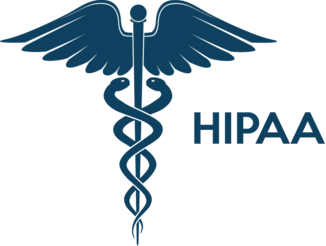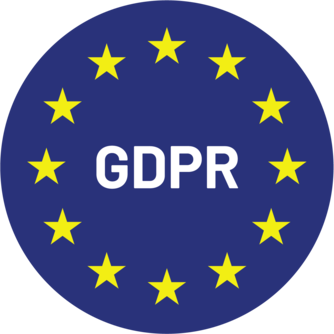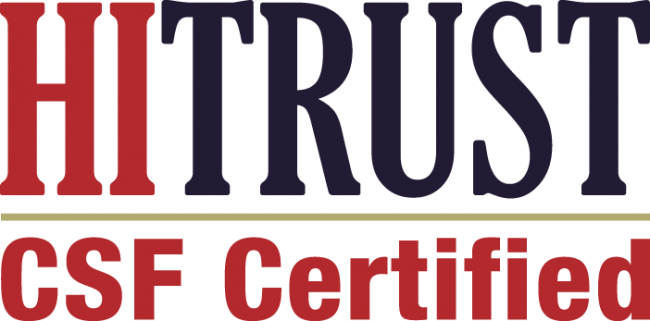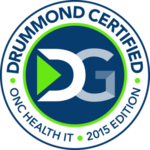Hypertension, commonly known as high blood pressure, remains one of the most prevalent and dangerous health conditions affecting Americans today. With nearly half of all adults in the United States living with hypertension, the condition serves as a silent threat that significantly increases the risk of stroke, heart attack, and other cardiovascular complications. As healthcare continues to evolve toward more patient-centered, technology-driven approaches, Remote Patient Monitoring (RPM) has emerged as a game-changing solution for managing hypertension at home while reducing stroke risk.
This comprehensive guide explores how RPM technology is revolutionizing hypertension management, particularly for Medicare patients, and examines the critical role it plays in stroke prevention across American healthcare systems.
Understanding Hypertension: The Silent Killer
The Scale of the Problem
Hypertension affects approximately 116 million adults in the United States, representing nearly 47% of the adult population. What makes this condition particularly dangerous is its asymptomatic nature—most people with high blood pressure experience no warning signs or symptoms, earning it the moniker “the silent killer.”
Recent data from the Centers for Disease Control and Prevention reveals alarming statistics about hypertension awareness and control. During the period from August 2021 to August 2023, only 59.2% of adults with hypertension were aware of their condition. This lack of awareness contributes to poor management outcomes and increased cardiovascular risk.
The Stroke Connection
The relationship between hypertension and stroke risk is both direct and devastating. High blood pressure is the leading modifiable risk factor for stroke, contributing to approximately 70% of all strokes. When blood pressure remains elevated over time, it damages blood vessel walls, making them more susceptible to blockages (ischemic stroke) or ruptures (hemorrhagic stroke).
Current statistics paint a concerning picture of stroke prevalence in America. Every 40 seconds, someone in the United States experiences a stroke, and every 3 minutes and 11 seconds, someone dies from stroke-related complications. In 2022, stroke accounted for 17.5% of all cardiovascular disease deaths, with the death rate reaching 39.5 per 100,000 people.
Risk Factors and Complications
Beyond stroke, uncontrolled hypertension increases the risk of numerous serious health complications, including:
- Cardiovascular Disease: Hypertension strains the heart muscle, leading to heart failure, coronary artery disease, and irregular heart rhythms
- Kidney Disease: High blood pressure damages the small blood vessels in the kidneys, potentially leading to chronic kidney disease
- Vision Problems: Hypertension can damage the blood vessels in the eyes, causing vision loss or blindness
- Cognitive Decline: Emerging research suggests links between hypertension and increased risk of dementia and cognitive impairment
The Evolution of Remote Patient Monitoring in Healthcare
What is Remote Patient Monitoring?
Remote Patient Monitoring represents a paradigm shift in healthcare delivery, enabling continuous monitoring of patients’ vital signs and health metrics outside traditional clinical settings. RPM systems typically consist of connected devices that collect physiological data—such as blood pressure, heart rate, weight, and blood glucose levels—and transmit this information electronically to healthcare providers for real-time analysis and intervention.
For hypertension management, RPM systems primarily focus on automated blood pressure monitoring devices that can take regular readings and instantly transmit data to healthcare teams. This continuous monitoring approach provides a more comprehensive picture of a patient’s blood pressure patterns than occasional clinic visits can offer.
The Technology Behind RPM
Modern RPM systems leverage several key technologies to ensure accurate, reliable monitoring:
Connected Devices: FDA-approved blood pressure monitors equipped with cellular, Wi-Fi, or Bluetooth connectivity automatically transmit readings to secure cloud-based platforms.
Data Analytics: Advanced algorithms analyze blood pressure trends, identify patterns, and flag concerning readings that require immediate attention.
Clinical Dashboards: Healthcare providers access comprehensive dashboards that display patient data in real-time, enabling rapid response to changes in blood pressure control.
Patient Engagement Tools: Mobile apps and web portals allow patients to view their data, receive educational content, and communicate with their healthcare teams.
Benefits of RPM for Hypertension Management
The advantages of RPM for hypertension management extend far beyond convenience:
Continuous Monitoring: Unlike traditional care models that rely on periodic clinic visits, RPM provides continuous insight into blood pressure patterns throughout the day and across different activities.
Early Intervention: Real-time monitoring enables healthcare providers to identify blood pressure spikes or concerning trends immediately, allowing for prompt medication adjustments or lifestyle interventions.
Improved Medication Adherence: Regular monitoring and feedback help patients understand the impact of their medications, leading to better adherence to prescribed treatment regimens.
Lifestyle Modification Support: RPM systems can track the effects of dietary changes, exercise, and stress management on blood pressure, providing valuable feedback for lifestyle modifications.
Reduced Healthcare Costs: By preventing complications and reducing the need for emergency interventions, RPM can significantly lower overall healthcare costs for both patients and healthcare systems.
Medicare Coverage for RPM: Understanding the Landscape
Medicare’s RPM Coverage Evolution
Medicare’s coverage of Remote Patient Monitoring has evolved significantly since its initial implementation in 2018. The Centers for Medicare & Medicaid Services (CMS) recognized the value of RPM technology and has gradually expanded coverage to include various chronic conditions, with hypertension being a primary focus area.
Current Medicare coverage for RPM services includes several specific billing codes that healthcare providers can use to receive reimbursement for remote monitoring services. The coverage encompasses both the technology costs and the clinical oversight required to manage patients remotely.
Current Coverage Requirements
Medicare Part B provides coverage for RPM services, but several specific requirements must be met:
Established Patient Relationship: Medicare requires an established patient relationship before RPM services can be initiated. This means patients must have received face-to-face care from their healthcare provider before beginning remote monitoring.
Chronic Condition Management: RPM services must be used to monitor acute or chronic conditions, making hypertension an ideal candidate for coverage.
Minimum Monitoring Requirements: Patients must use RPM devices for at least 16 days within 30 days to qualify for Medicare reimbursement.
Clinical Oversight: Healthcare providers must dedicate specific time to reviewing and interpreting RPM data, with different billing codes for initial setup, ongoing monitoring, and clinical review.
Reimbursement Structure
Medicare reimburses RPM services through several Current Procedural Terminology (CPT) codes:
CPT 99453: Initial setup and patient education for RPM devices CPT 99454: Supply and monitoring of RPM devices for 30 days CPT 99457: Clinical review and interpretation of RPM data (first 20 minutes) CPT 99458: Additional clinical review time (each additional 20 minutes)
Medicare typically covers 80% of approved RPM services, with patients responsible for the remaining 20% through co-insurance or supplemental insurance plans.
Coverage Limitations and Considerations
While Medicare coverage for RPM has expanded significantly, some limitations remain:
Geographic Restrictions: Some rural areas may have limited access to RPM services due to technological infrastructure challenges.
Provider Participation: Not all healthcare providers offer RPM services, limiting access for some Medicare beneficiaries.
Technology Requirements: Patients must have adequate technology literacy and access to support successful RPM implementation.
RPM Implementation for Hypertension: A Comprehensive Approach
Patient Selection and Assessment
Successful RPM implementation begins with careful patient selection and assessment. Healthcare providers must evaluate several factors when determining which patients are appropriate candidates for remote monitoring:
Clinical Indicators: Patients with uncontrolled hypertension, frequent blood pressure fluctuations, or those requiring medication adjustments are ideal candidates for RPM.
Technology Readiness: Patients must demonstrate the ability to use RPM devices independently or have adequate support systems to ensure proper device utilization.
Engagement Level: Successful RPM requires active patient participation in monitoring and responding to healthcare provider recommendations.
Comorbidities: Patients with multiple chronic conditions, particularly diabetes and cardiovascular disease, may benefit significantly from comprehensive RPM monitoring.
Device Selection and Setup
The choice of RPM devices plays a crucial role in program success. Healthcare providers must consider several factors when selecting blood pressure monitoring equipment:
Accuracy and Validation: Devices must meet FDA standards for accuracy and be validated for home use.
Connectivity Options: Modern RPM systems offer various connectivity options, including cellular, Wi-Fi, and Bluetooth capabilities.
User Interface: Devices should have intuitive interfaces that are easy for patients to navigate and understand.
Data Transmission: Automatic data transmission capabilities ensure consistent monitoring without relying on patient compliance for data sharing.
Clinical Workflow Integration
Effective RPM implementation requires seamless integration with existing clinical workflows:
Data Management Systems: RPM data must integrate with electronic health records (EHRs) to provide comprehensive patient information.
Alert Systems: Clinical teams need robust alert systems that notify providers of concerning blood pressure readings or trends.
Response Protocols: Healthcare organizations must establish clear protocols for responding to different types of alerts and patient concerns.
Care Coordination: RPM systems should facilitate communication between different members of the healthcare team, including physicians, nurses, and clinical pharmacists.
Patient Education and Support
Successful RPM programs require comprehensive patient education and ongoing support:
Initial Training: Patients need thorough training on device operation, data interpretation, and when to seek immediate medical attention.
Ongoing Support: Technical support systems must be available to help patients troubleshoot device issues and maintain engagement with the monitoring program.
Educational Resources: Patients benefit from access to educational materials about hypertension management, medication adherence, and lifestyle modifications.
Communication Channels: Clear communication channels must be established between patients and healthcare providers for questions, concerns, and regular check-ins.
Clinical Outcomes and Evidence-Based Benefits
Research Findings on RPM Effectiveness
Multiple clinical studies have demonstrated the effectiveness of RPM in improving hypertension management and reducing cardiovascular risk:
Blood Pressure Control: Studies consistently show that patients participating in RPM programs achieve better blood pressure control compared to traditional care models. Average systolic blood pressure reductions of 8-12 mmHg and diastolic reductions of 4-6 mmHg have been documented across multiple studies.
Medication Adherence: RPM participation is associated with improved medication adherence rates, with some studies showing increases of 15-20% in proper medication compliance.
Healthcare Utilization: Patients in RPM programs typically experience reduced emergency department visits and hospitalizations related to hypertensive crises and cardiovascular complications.
Quality of Life: Improved blood pressure control through RPM leads to better overall quality of life measures, including reduced symptoms and improved daily functioning.
Stroke Prevention Outcomes
The most significant benefit of RPM for hypertension management is its potential to reduce stroke risk:
Primary Prevention: For patients without previous stroke history, effective blood pressure control through RPM can reduce stroke risk by 30-40%.
Secondary Prevention: Patients with previous stroke or transient ischemic attack (TIA) benefit even more significantly, with stroke recurrence rates reduced by up to 50% with optimal blood pressure control.
Time to Intervention: RPM enables earlier detection of blood pressure changes, allowing for faster interventions that can prevent progression to stroke.
Long-term Health Benefits
Beyond immediate blood pressure improvements, RPM participation provides long-term health benefits:
Cardiovascular Health: Sustained blood pressure control reduces the risk of heart attack, heart failure, and other cardiovascular complications.
Kidney Function: Better blood pressure management helps preserve kidney function and reduces the risk of chronic kidney disease progression.
Cognitive Health: Emerging evidence suggests that optimal blood pressure control may reduce the risk of cognitive decline and dementia.
Challenges and Barriers to RPM Implementation
Technical Challenges
Despite its benefits, RPM implementation faces several technical challenges:
Device Reliability: Technical malfunctions or connectivity issues can disrupt monitoring and create gaps in patient care.
Data Security: Protecting patient health information during transmission and storage requires robust cybersecurity measures.
Interoperability: Ensuring RPM systems can communicate effectively with different EHR systems and healthcare platforms remains challenging.
Technology Upgrades: Keeping pace with rapidly evolving technology requires ongoing investment and system updates.
Patient-Related Barriers
Several patient-related factors can impede successful RPM implementation:
Digital Divide: Older patients, particularly those in rural areas, may lack the technological skills or internet access necessary for effective RPM participation.
Health Literacy: Understanding blood pressure readings and appropriate responses requires adequate health literacy levels.
Compliance Challenges: Some patients struggle with the consistency required for effective RPM participation.
Cost Concerns: Despite Medicare coverage, some patients may be concerned about out-of-pocket costs associated with RPM services.
Healthcare System Barriers
Healthcare organizations face their challenges in implementing RPM programs:
Staff Training: Clinical staff require training on RPM technology, data interpretation, and patient support.
Workflow Integration: Incorporating RPM data review into existing clinical workflows requires careful planning and system redesign.
Resource Allocation: RPM programs require dedicated staff time and resources for patient monitoring and response.
Quality Metrics: Establishing appropriate quality metrics and outcome measures for RPM programs remains challenging.
Future Directions and Innovations
Emerging Technologies
The future of RPM for hypertension management holds exciting possibilities:
Wearable Technology: Advanced wearable devices will enable continuous, non-invasive blood pressure monitoring throughout the day.
Predictive Analytics: Machine learning algorithms will identify patients at highest risk for complications and enable proactive interventions.
Telemedicine Integration: Enhanced integration between RPM and telemedicine platforms will provide more comprehensive remote care options.
Policy and Coverage Developments
Healthcare policy continues to evolve in support of RPM:
Expanded Coverage: Medicare and other payers are likely to expand coverage for RPM services and related technologies.
Value-Based Care: RPM programs align well with value-based care models that reward providers for achieving better patient outcomes.
Regulatory Improvements: Streamlined regulatory processes may reduce barriers to RPM implementation and technology adoption.
Quality Measures: Development of standardized quality measures for RPM programs will help demonstrate value and improve outcomes.
Population Health Impact
The widespread adoption of RPM has the potential to create significant population health benefits:
Reduced Healthcare Costs: Effective RPM programs can reduce overall healthcare costs by preventing complications and reducing emergency interventions.
Improved Access: RPM can improve access to specialty care for patients in rural or underserved areas.
Health Equity: Thoughtful implementation of RPM programs can help address health disparities and improve outcomes for underserved populations.
Public Health Benefits: Large-scale RPM implementation could contribute to national goals for reducing cardiovascular disease and stroke rates.
Practical Implementation Guide for Healthcare Providers
Getting Started with RPM
Healthcare providers interested in implementing RPM for hypertension management should follow a systematic approach:
Needs Assessment: Evaluate the current patient population and identify those who would benefit most from RPM services.
Technology Selection: Choose RPM platforms and devices that integrate well with existing systems and meet patient needs.
Staff Training: Provide comprehensive training for clinical staff on RPM technology, data interpretation, and patient support.
Pilot Program: Start with a small pilot program to test workflows and identify areas for improvement.
Outcome Measurement: Establish clear metrics for measuring program success and patient outcomes.
Patient Engagement Strategies
Successful RPM programs require strong patient engagement:
Clear Communication: Provide clear explanations of RPM benefits and expectations for patient participation.
Support Systems: Establish robust support systems to help patients with technical issues and clinical questions.
Regular Feedback: Provide regular feedback to patients about their blood pressure trends and progress.
Incentives: Consider implementing incentive programs to encourage consistent participation and engagement.
Quality Improvement
Continuous quality improvement is essential for successful RPM programs:
Data Analysis: Regularly analyze RPM data to identify trends and improvement opportunities.
Patient Feedback: Collect and act on patient feedback to improve program effectiveness and satisfaction.
Clinical Outcomes: Monitor clinical outcomes to demonstrate program value and identify areas for enhancement.
Technology Updates: Stay current with technology improvements and upgrade systems as needed.
Conclusion
Remote Patient Monitoring represents a transformative approach to hypertension management that offers significant benefits for American patients, particularly those covered by Medicare. By enabling continuous monitoring, early intervention, and improved medication adherence, RPM has the potential to significantly reduce stroke risk and improve overall cardiovascular health outcomes.
The evidence supporting RPM effectiveness continues to grow, with studies demonstrating improved blood pressure control, reduced healthcare utilization, and better quality of life for participating patients. As Medicare coverage expands and technology continues to advance, RPM is poised to become an increasingly important component of comprehensive hypertension management.
Healthcare providers, policymakers, and patients must work together to address the challenges associated with RPM implementation while maximizing its benefits. By focusing on patient education, technology accessibility, and clinical workflow integration, we can ensure that RPM fulfills its promise of improving health outcomes while reducing healthcare costs.
The future of hypertension management lies in the successful integration of technology, clinical expertise, and patient engagement. Remote Patient Monitoring provides a powerful tool for achieving this integration, offering hope for better blood pressure control, reduced stroke risk, and improved quality of life for millions of Americans living with hypertension. As we continue to refine and expand RPM programs, we move closer to a healthcare system that truly puts patients at the center of their care, regardless of where they are located.
Ready to Transform Your Hypertension Care?
Healthcare practices looking to implement Medicare RPM for hypertension management can take advantage of HealthViewX’s proven platform and expertise. With demonstrated success in improving blood pressure control, reducing stroke risk, and generating sustainable revenue through Medicare reimbursement, HealthViewX provides the foundation for successful RPM implementation.
To learn more about how HealthViewX can help your practice launch a successful Medicare RPM program for hypertension management, visit www.healthviewx.com or schedule a demonstration to see how this comprehensive platform can transform your approach to cardiovascular care while improving patient outcomes and practice revenue.



